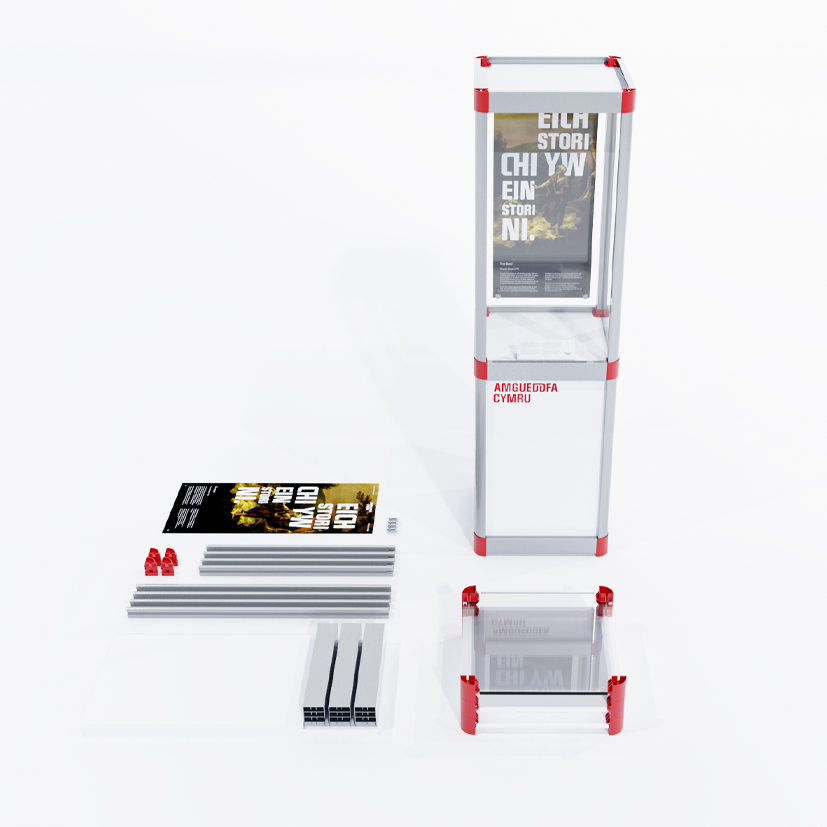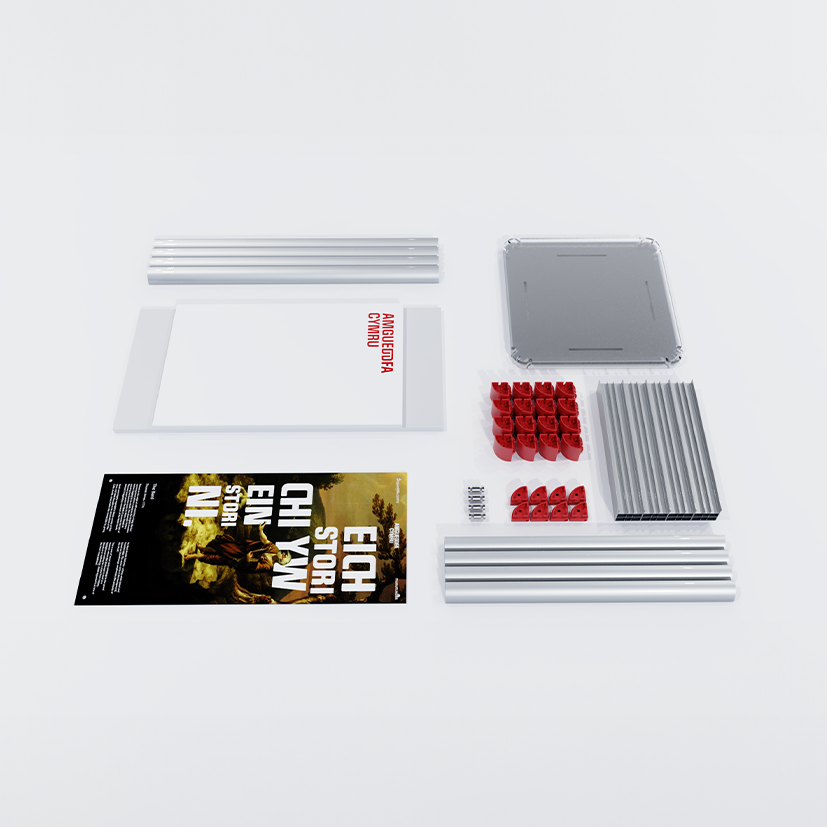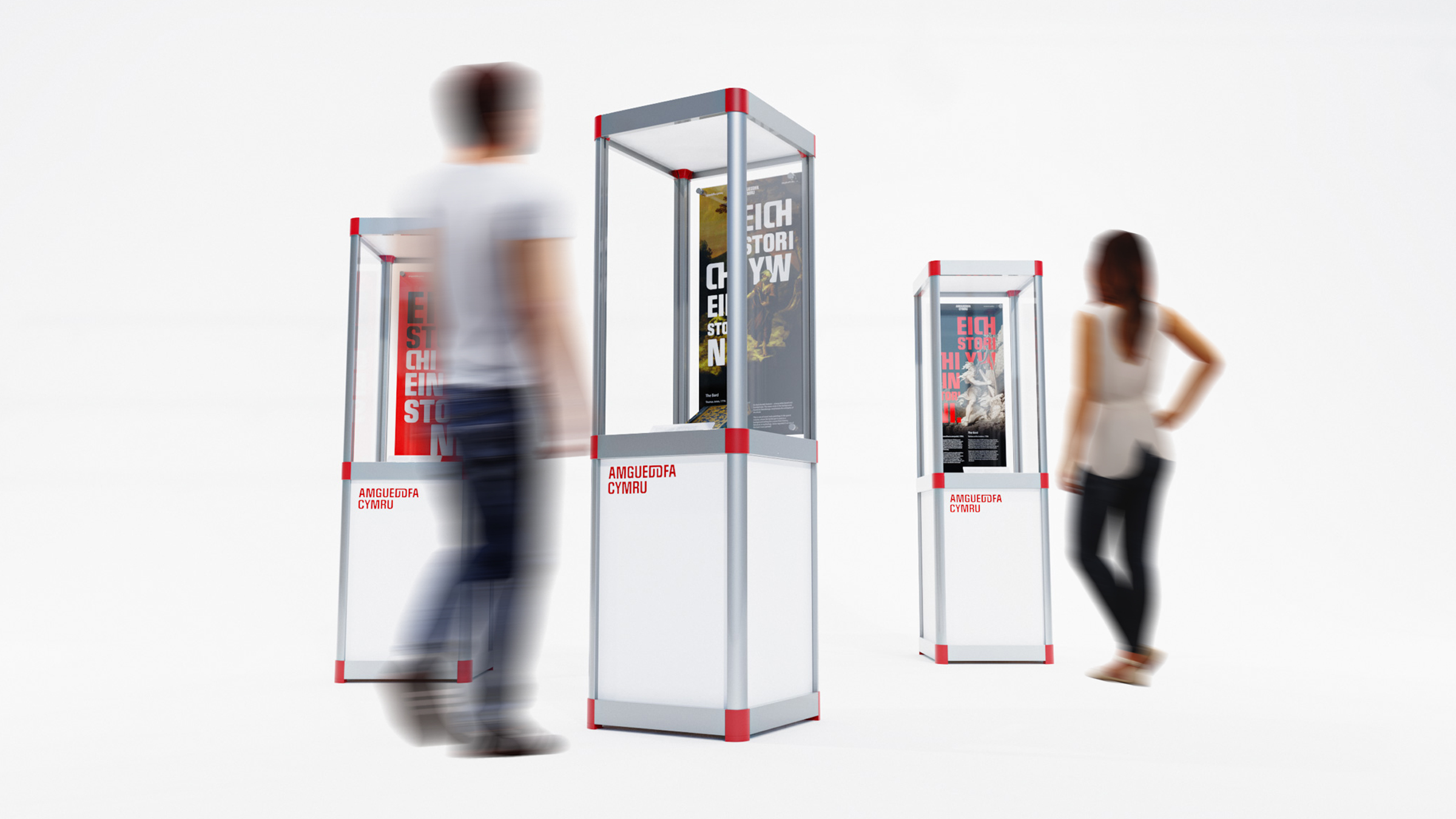Exploring the Museum Without Walls
Museum Without Walls was a project developed for Amgueddfa Cymru - Museum Wales to take the Museum’s extensive collections out into the communities of Wales. In this article Stuart Clarke, Product Design Engineer, and Catriona Mackenzie, User Centred Designer, sit down to discuss the team’s work.
“The project originated from Amgueddfa Cymru as part of their 2030 strategy to reach and engage with new audiences in new and less traditional venues across Wales,” Stuart begins. “Essentially it’s a response to an identified need to move outside of the conventional ‘walls’ and restraints of a museum.”
Amgueddfa Cymru is a compendium of sites across the country. From the traditional cottages of St Fagans steeped in the rich history of ordinary Welsh lives, to the immersive underground tunnels of the Big Pit National Coal Museum and more, all the Museum’s many sites offer interactive and engaging experiences within physical spaces. The same is true of Cardiff’s flagship site, with its halls of exhibitions and objects.
“It can be difficult for people – particularly for those with barriers to access like living away from the museum’s sites - to access these spaces. The project aims to mobilise the museum’s collections and take them out into the community, widening access to Amgueddfa Cymru’s resources across Wales.”
As ever, we began the project with fact-finding, in-depth research. “We worked with the Museum’s staff - the conservators, curators, the learning team, security and more - to get to grips with their expertise, and their hopes and expectations for the project too. That helped us form a larger goal for where this project should head and the research, strategy and resources shared with us enabled us to map out the project’s potential impact,” Catriona continues. Our interviews led us on a site visit to Amgueddfa Cymru’s Collections Centre in Nantgarw. “A large proportion of the Museum’s artefacts are stored at Nantgarw. Spending time amongst the museum’s extensive collections helped us appreciate the different stories an object can tell and understand the value that the museum’s collections may hold for people who don’t normally get to experience them.”
The project came with some technical challenges, of course. “Some types of wood aren’t ideal to display objects on and everything should be dust-sealed to avoid damage, for example - so there were technical requirements we had to iron out at an early stage to ensure every object was cared for.”

The project came with some technical challenges, of course. “Some types of wood aren’t ideal to display objects on and everything should be dust-sealed to avoid damage, for example - so there were technical requirements we had to iron out at an early stage to ensure every object was cared for.”
Through a series of iterative ideation workshops, we were able to focus on and narrow down the ideas of the Amgueddfa Cymru project team - from this we were able to develop a detailed design spec for what this ‘kit’ should be able to do. “We did two design sprints; one focused on the service and wider system supporting the kit, the other was a two-day in-depth sprint with designers across PDR looking at the physical design of the kit, asking how might it work? What might it be made of? How is it assembled?” Catriona explains.
Through a series of iterative ideation workshops, we were able to focus on and narrow down the ideas of the Amgueddfa Cymru project team - from this we were able to develop a detailed design spec for what this ‘kit’ should be able to do. “We did two design sprints; one focused on the service and wider system supporting the kit, the other was a two-day in-depth sprint with designers across PDR looking at the physical design of the kit, asking how might it work? What might it be made of? How is it assembled?” Catriona explains.
“This led us to develop three concepts, one of which the museum selected; a modular, easy to assemble kit that can securely display an array of objects and artefacts with accompanying information. Our teams have since developed, iterated and finalised the design, before producing a run of units for Amgueddfa Cymru to begin using.”
“We always wanted to design something with longevity that will allow the museum to have the benefit of using for a long period of time; something they can expand upon and evolve along with their needs,” Stuart explains. “The ultimate success will be a kit they can continue to use, long after this project ends, in a variety of environments, reaching as many people as possible across Wales.”
Next steps
Read more of our latest news, or explore more of our work with Amgueddfa Cymru.


